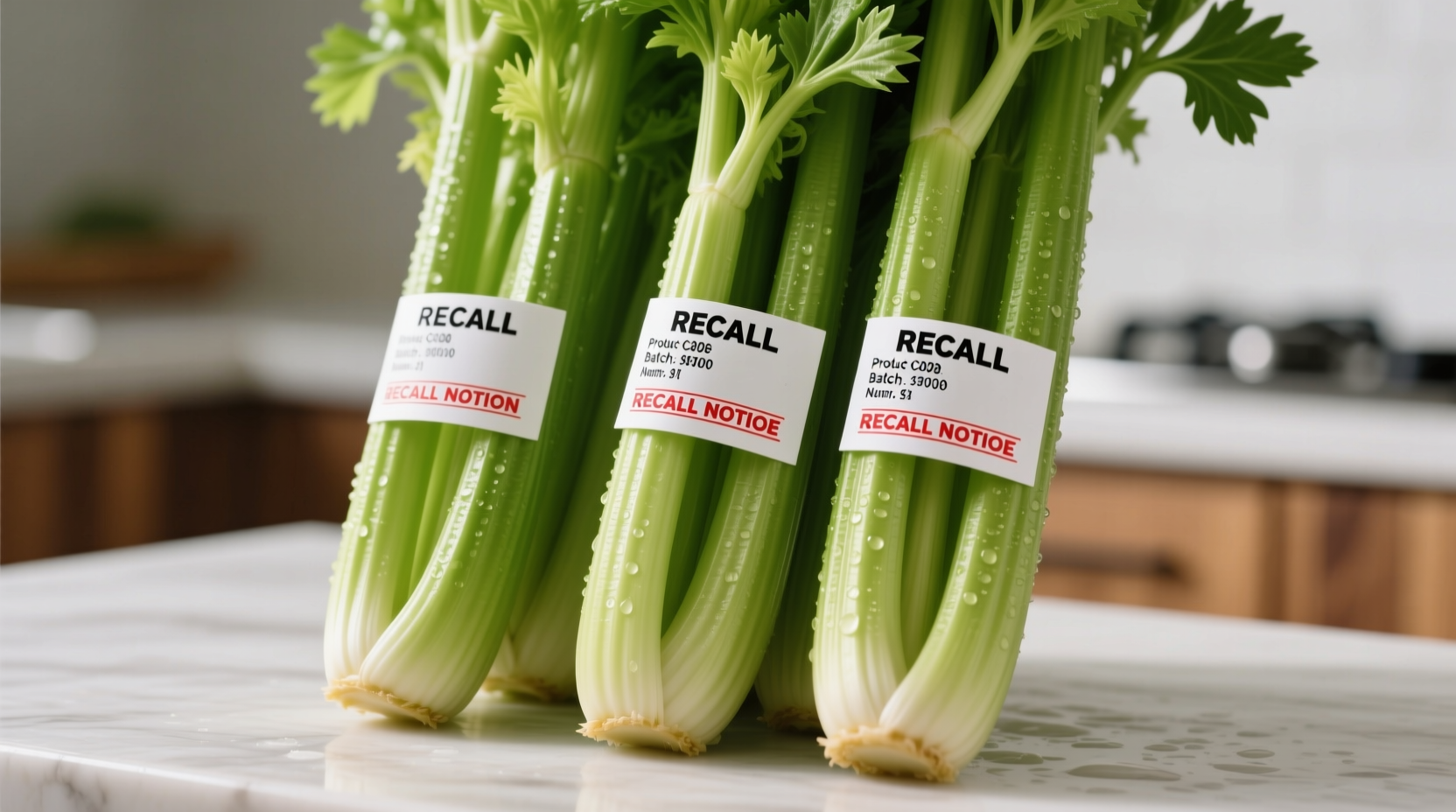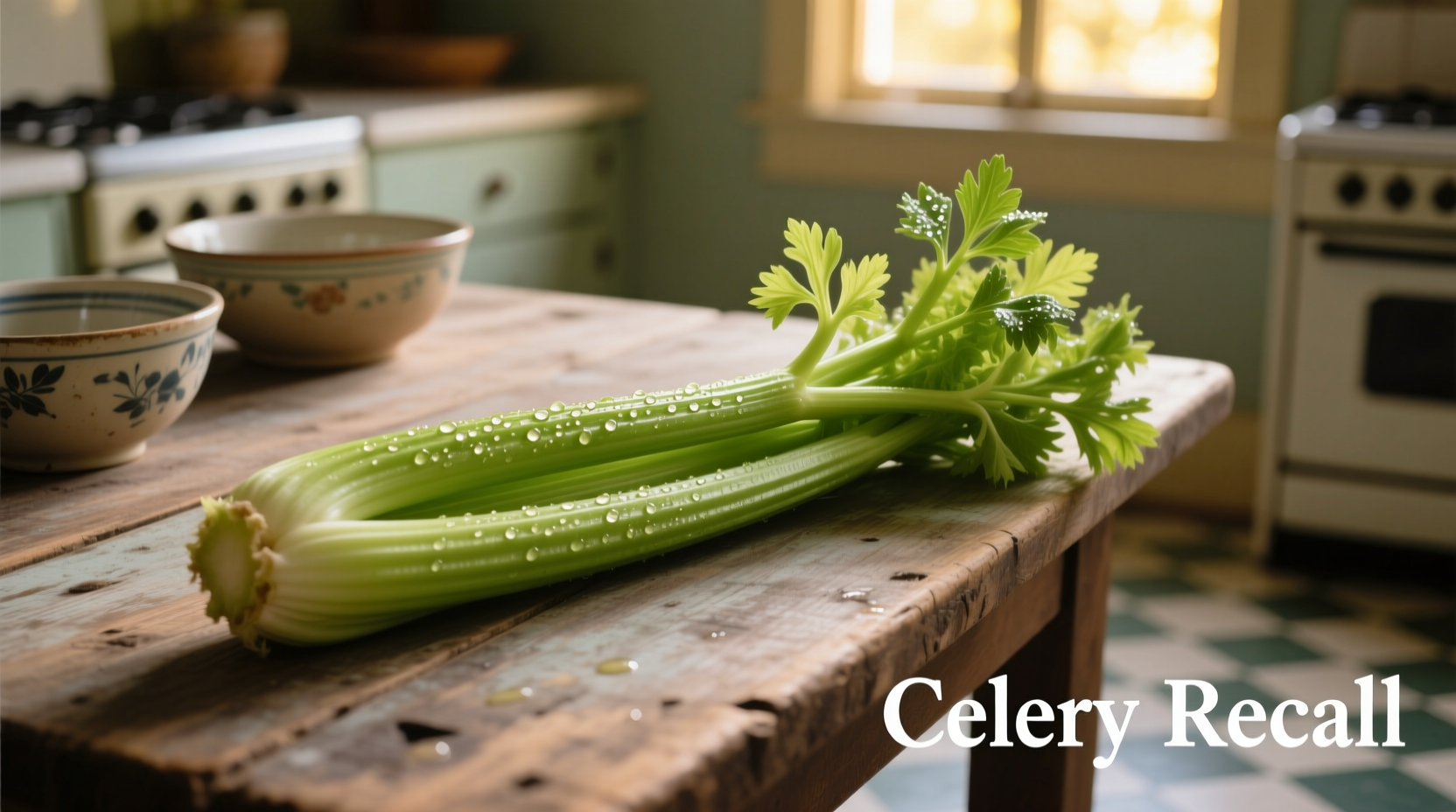As of today, there is no active nationwide celery recall in the United States. The most recent celery recall occurred in March 2024 when FreshProducers Inc. voluntarily recalled specific batches of conventional celery due to potential listeria contamination. If you purchased celery from FreshProducers between February 15-28, 2024 with UPC 078742105832 and best-by dates of March 1-10, 2024, you should discard the product immediately or return it to the place of purchase for a full refund.
When a celery recall happens, knowing exactly what to do can protect your family's health. This guide provides the latest verified information about recent celery recalls, how to identify affected products, and practical steps to keep your kitchen safe. We've compiled official data from food safety authorities to give you clear, actionable guidance without unnecessary alarm.
Current Status of Celery Recalls
Food safety alerts change rapidly, which is why it's essential to verify the current status before taking action. According to the U.S. Food and Drug Administration's most recent update, no celery products are currently under active recall. The previous recall involving FreshProducers Inc. celery was resolved on March 25, 2024 after the company confirmed all potentially affected products had been removed from distribution channels.
| Recall Status | Affected Products | Reason | Action Required |
|---|---|---|---|
| Resolved (March 2024) | FreshProducers conventional celery (UPC 078742105832) | Potential Listeria monocytogenes contamination | Discard or return for refund |
| No current recall | N/A | N/A | No action needed |
If You Have Recalled Celery: Immediate Action Steps
Should a celery recall occur in the future, follow these verified safety procedures:
- Check your refrigerator immediately - Locate any celery products and examine packaging for brand names, UPC codes, and best-by dates
- Cross-reference with official sources - Visit FDA.gov/recalls or use the FDA Recalls, Market Withdrawals, & Safety Alerts RSS feed
- Do not consume suspicious products - Even if the celery looks and smells normal, contamination may not be detectable
- Proper disposal - Place recalled celery in a sealed plastic bag before discarding to prevent accidental consumption by others
- Sanitize affected areas - Clean refrigerator shelves, countertops, and cutting boards with a solution of 1 tablespoon unscented bleach per gallon of water
How to Identify Potentially Affected Celery Products
Understanding packaging details helps you quickly determine if your products are involved in a recall. Most celery recalls specify:
- Exact brand name and product description
- Specific UPC (Universal Product Code) numbers
- Production dates or best-by dates
- Geographic distribution areas
- Specific packaging characteristics
For example, the March 2024 recall affected only FreshProducers conventional celery with UPC 078742105832, packaged in standard retail trays with "Best By" dates between March 1-10, 2024. Organic varieties and other packaging formats from the same company were not affected.

Understanding the Health Risks
Listeria contamination, the most common reason for celery recalls, poses serious health risks, particularly for vulnerable populations. According to the Centers for Disease Control and Prevention, listeriosis causes approximately 1,600 illnesses and 260 deaths annually in the United States.
High-risk groups include:
- Pregnant women (10 times more likely to get listeriosis)
- Adults aged 65 and older
- People with weakened immune systems
Symptoms of listeriosis typically appear 1-4 weeks after exposure and may include fever, muscle aches, headache, stiff neck, confusion, loss of balance, and convulsions. Pregnant women may experience only mild, flu-like symptoms but face serious risks to their pregnancy.
How Celery Recalls Typically Happen
Understanding the recall process helps you interpret news about food safety alerts. Here's the typical timeline for a produce recall:
| Timeline Stage | Key Events | Duration |
|---|---|---|
| Detection | Routine testing identifies contamination at processing facility or through illness reports | 1-7 days |
| Investigation | Company and FDA trace contamination source and affected batches | 3-10 days |
| Recall Initiation | Company issues voluntary recall; FDA classifies recall severity | Immediate |
| Public Notification | FDA publishes recall notice; retailers remove products | Within 24-48 hours |
| Resolution | Company confirms all affected products removed; FDA terminates recall | 2-8 weeks |
Preventing Future Issues: Smart Shopping Practices
While you can't prevent recalls from happening, you can minimize risks through smart shopping habits:
- Check recall notices before purchasing - Visit FDA.gov before buying large quantities of produce
- Keep grocery receipts - They help identify purchase dates if a recall affects products you've bought
- Store celery properly - In the crisper drawer at 32-36°F (0-2°C) with high humidity
- Wash thoroughly before use - Use a vegetable brush under running water, though this won't eliminate listeria
- Stay informed - Sign up for FDA email alerts or follow @USDAFoodSafety on social media
How Food Safety Authorities Monitor Produce Safety
The U.S. food safety system employs multiple layers of protection. The FDA's Leafy Greens STEC Action Plan, launched in 2019, specifically addresses contamination risks in vegetables like celery. This initiative includes enhanced testing protocols, improved traceability through the Food Traceability Rule, and voluntary on-farm safety practices.
According to the FDA's 2023 report on produce safety, the agency conducted over 1,200 inspections of leafy green operations and collected more than 4,000 environmental samples from growing regions. These efforts have contributed to a 30% reduction in reported listeria incidents in fresh produce since 2020.
When to Contact Health Professionals
If you've consumed recalled celery and experience symptoms, contact your healthcare provider immediately. The CDC recommends mentioning your potential exposure to listeria, as specific diagnostic tests are required. Early treatment with antibiotics can prevent severe complications, particularly for high-risk individuals.
For non-emergency questions about food recalls, contact the USDA Meat and Poultry Hotline at 1-888-MPHotline (1-888-674-6854) or the FDA Consumer Complaint Coordinator in your area.











 浙公网安备
33010002000092号
浙公网安备
33010002000092号 浙B2-20120091-4
浙B2-20120091-4